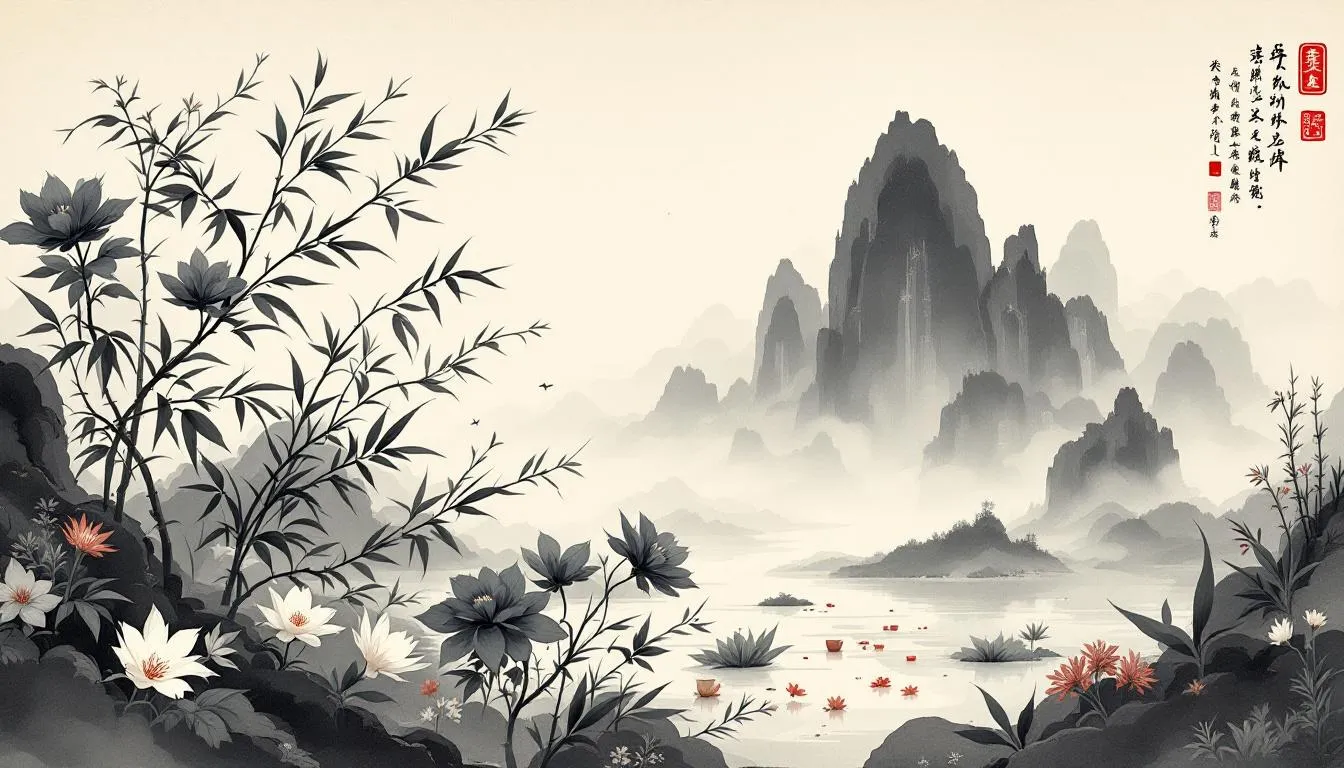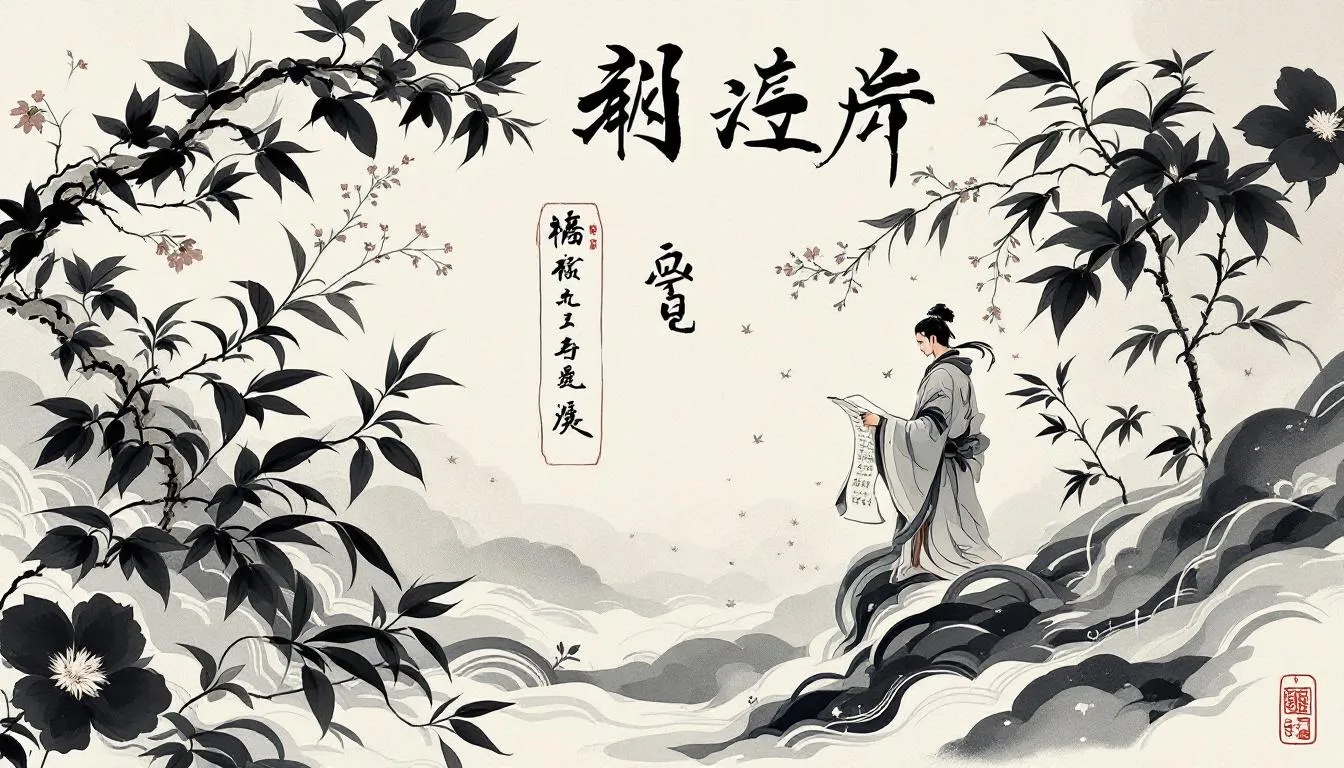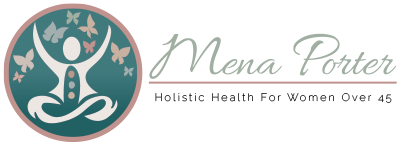The Ultimate Guide to Traditional Chinese Medicine: Benefits and Practices
Traditional Chinese Medicine (TCM) is an ancient health system focused on balancing the body’s energy, or Qi. By understanding TCM’s principles and practices like acupuncture and herbal medicine, you can explore how it might enhance your well-being. This article breaks down the core concepts and benefits of TCM for modern health needs.
Key Takeaways
- Traditional Chinese Medicine (TCM) emphasizes a holistic approach focusing on balance and harmony in the body, highlighting the importance of Qi, Yin, and Yang.
- Key practices in TCM, such as acupuncture and herbal medicine, are used to restore wellness and treat various ailments through personalized treatments.
- Safety and regulation are essential in TCM due to potential risks from unregulated ingredients, with various countries establishing guidelines to ensure practitioners meet ethical standards.
Understanding Traditional Chinese Medicine (TCM)

Traditional Chinese Medicine (TCM) is rooted in a philosophy that sees health as a state of balance and harmony. While Western medicine often targets specific symptoms or diseases, TCM adopts a holistic approach to restore the body’s natural equilibrium. According to TCM theory, illness results from an improper flow of Qi, the vital energy that circulates through the body. This holistic approach is grounded in ancient principles, including the concepts of Qi, Yin, and Yang, which are integral to understanding TCM.
Qi, described as the life force or vital breath, sustains all living beings. It is generated from:
- Food
- Drink
- Air
- Hereditary factors
Its proper flow maintains health. The meridian system, with 12 major channels, circulates Qi throughout the body, influencing various body’s functions.
The concept of Yin and Yang, representing complementary opposites, is also vital in TCM. These forces must be balanced for optimal body function. For example, the upper body is Yang, while the lower body is Yin. Cold sensations align with Yin, and heat with Yang. This balance prevents illness and maintains well-being.
Qi and Meridians
Qi, the vital energy or life force, is central to TCM. It influences health by maintaining energy flow and balance throughout the body. Generated from food, drink, air, and hereditary factors, the proper flow of Qi sustains life and ensures body systems function correctly.
The meridian system comprises 12 major channels that channel Qi throughout the body. Key points include:
- These meridians act as pathways for Qi circulation to organs and tissues.
- Acupuncture points along these meridians can be stimulated to influence Qi flow and promote healing.
- Techniques like acupuncture and acupressure target these points to restore balance and alleviate health issues.
Yin and Yang
Yin and Yang represent the dualistic nature of all things in the universe and are fundamental to TCM. These complementary opposites exist in harmony, and their balance is crucial for health. TCM categorizes bodily organs and functions based on Yin and Yang systems rather than individual organs. For instance, the upper body is Yang, while the lower body is Yin.
Yin corresponds to qualities like coldness, darkness, and receptivity, while Yang is linked to heat, light, and activity. Balancing these forces is vital for health and preventing illness. Imbalances can lead to health issues, which TCM aims to address by restoring harmony through yin yang.
This balance is a recurring theme in TCM, influencing everything from diagnostic techniques to treatment methods.
Key Practices in Traditional Chinese Medicine

Traditional Chinese Medicine includes practices designed to restore balance and promote health, such as:
- Acupuncture
- Chinese herbal medicine
- Tai Chi
- Qigong
Each offers unique therapeutic benefits. TCM practitioners use these methods to address physical and emotional symptoms, providing a holistic approach to well-being.
Acupuncture, a well-known TCM practice, involves inserting thin needles into specific points to stimulate healing and relieve pain. Chinese herbal medicine uses a wide range of ingredients, including plants, minerals, and animal products, often combined in complex formulas to treat disorders.
Tai Chi and Qigong are physical and meditative practices that enhance well-being through gentle movements and deep breathing. These practices form the core of TCM, offering a comprehensive approach to health.
Acupuncture
Acupuncture, a cornerstone of TCM, involves inserting thin needles into specific body points to stimulate healing and relieve pain. These points are along the body’s meridians, which channel Qi flow. Stimulating these points aims to restore Qi flow and address various health issues.
Electroacupuncture, a modern variation, applies an electric current to the needles after insertion, enhancing the treatment’s effects. Acupressure, however, stimulates these points without needles, offering a non-invasive alternative.
Chinese Herbal Medicine
Chinese herbal medicine, another key TCM practice, uses a variety of ingredients, including plants, minerals, and animal products, to create complex formulas tailored to individual needs. These formulas address specific health issues and restore body balance. For example, herb remedies often strengthen lung function and alleviate respiratory infection symptoms, including the use of medicines.
Chinese herbal medicine effectively targets multiple aspects of a condition simultaneously. TCM practitioners combine various herbs and one herb to create personalized treatments that address the root causes of an illness, not just its symptoms.
This holistic approach distinguishes Chinese herbal medicine from many Western treatments, offering a complementary and alternative option for natural remedies.
Tai Chi and Qigong
Tai Chi and Qigong focus on improving well-being through physical movements and meditative activities. Tai Chi involves slow, deliberate movements that enhance balance, stability, and flexibility, making it particularly beneficial for the elderly and those with chronic conditions. Studies show that practicing Tai Chi can reduce pain from conditions like knee osteoarthritis and improve quality of life.
Qigong combines regulated breathing, slow movements, and focused awareness to enhance energy and health. Both practices emphasize gentle movements and deep breathing, promoting mental and physical health. Incorporating Tai Chi and Qigong into routines offers a holistic approach to maintaining health and well-being.
Historical Context of Traditional Chinese Medicine

Traditional Chinese Medicine has a rich history spanning thousands of years, evolving through various dynasties and cultural shifts. It includes a wide range of health practices, folk beliefs, herbal remedies, dietary guidelines, and exercise regimens aimed at promoting health and preventing illness. Significant contributions, such as those by Tu Youyou, who isolated an effective antimalarial substance from Artemisia annua, have further cemented TCM’s role in modern medicine.
Various historical texts and scholars have influenced TCM’s development. From the earliest known text, the Huangdi Neijing, to modern integrations with Western medicine, TCM has continually adapted and evolved. This historical context provides a deeper understanding of TCM’s principles and practices, highlighting its enduring relevance today.
Ancient Origins
Traditional Chinese Medicine’s origins trace back over 2,000 years to ancient Chinese civilizations. The earliest known text, the Huangdi Neijing, written in the 3rd century BCE, provides foundational theories for TCM. This ancient medical text integrates myth, legend, and empirical observations, forming a systematic body of knowledge influencing TCM practices for centuries.
The Huangdi Neijing and other early texts laid the groundwork for TCM by establishing key concepts such as Qi, Yin and Yang, and the Five Phases theory. These principles continue to guide TCM practitioners today, demonstrating the enduring relevance of ancient wisdom in modern healthcare. This holistic approach emphasizes the importance of balance and harmony in maintaining health.
Evolution Through Dynasties
Throughout China’s history, TCM has evolved and adapted to various cultural and scientific advancements. During the post-Han period, medical scholars like Tao Hongjing significantly contributed to TCM knowledge, expanding its theoretical and practical applications. The Canon of Problems, developed during this time, aimed to reconcile divergent medical doctrines and enhance needling therapy techniques, marking a significant advancement in acupuncture practices.
As TCM evolved through dynasties, it incorporated new ideas and practices, continuously refining its approach to health and healing. The synthesis of Yin and Yang concepts in the yellow emperor’s Inner Canon further solidified TCM’s theoretical foundation. This ongoing evolution has allowed TCM to remain relevant and effective, adapting to society’s changing needs while maintaining its core principles.
Modern Integration
The modern integration of TCM with Western medicine has significantly influenced its development and acceptance worldwide. During the Cultural Revolution, Mao Zedong’s support for TCM led to its preservation and further development. This period saw an intersection of traditional practices with modernity, as barefoot doctors in rural areas provided basic medical care by integrating principles of both TCM and Western medicine.
The opening of U.S.-China relations in 1972 sparked significant Western interest in TCM, leading to broader acceptance and integration. Acupuncture, for instance, became widely practiced in the 1960s, marking a significant step in TCM’s acceptance within modern medical contexts.
Today, TCM continues to evolve, blending ancient wisdom with modern scientific advancements to offer a comprehensive approach to the medical system.
Scientific Evidence and Efficacy

Scientific investigations of Traditional Chinese Medicine have yielded mixed results, with some treatments showing promise while others lack robust evidence of effectiveness. Systematic reviews and randomized controlled trials have evaluated the efficacy and safety of various TCM practices, including acupuncture and Chinese herbal medicine. However, challenges like variable doses, unidentified active ingredients, and inconsistent research standards complicate the acquisition of high-quality evidence.
Despite these challenges, recent studies indicate clinical efficacy for TCM in conditions such as Tourette syndrome, post-stroke depression, and acute gouty arthritis. Ongoing research continues to explore the potential health benefits of TCM, aiming to bridge the gap between traditional practices and modern scientific standards.
As interest in complementary and alternative medicine grows, the science community remains committed to investigating the therapeutic potential of TCM.
Clinical Studies on Acupuncture
Acupuncture is one of the most widely researched practices within Traditional Chinese Medicine. Numerous randomized controlled trials have evaluated acupuncture’s effectiveness for various pain conditions, showing that it can be more effective in relieving pain compared to sham acupuncture. These findings underscore acupuncture’s potential as a therapeutic tool for pain management, supporting its use in clinical settings.
Studies suggest that acupuncture provides significant pain relief and can help reduce the frequency of tension headaches and migraines. This evidence highlights the value of acupuncture as a complementary treatment alongside conventional medical approaches.
As research continues, the scientific community remains focused on understanding the mechanisms behind acupuncture’s efficacy and expanding its applications in modern healthcare.
Research on Chinese Herbal Medicine
Chinese herbal medicine has been utilized for over 2,000 years, indicating its long-standing significance in traditional practices. However, the current body of trials concerning herbal therapies in Traditional Chinese Medicine (TCM) often lacks high quality and rigor. Many studies on Chinese herbal products have been criticized for their poor quality, indicating a need for improvement in research standards.
Challenges such as variable doses and unidentified active ingredients complicate the acquisition of high-quality evidence for herbal efficacy. Despite these issues, research initiatives continue to explore the potential benefits of Chinese herbal medicine, particularly for respiratory diseases and heart conditions.
By addressing these research challenges, the scientific community aims to provide more robust evidence for the efficacy of herbal treatments in TCM through a systematic review.
Tai Chi and Qigong Benefits
Tai Chi and Qigong are highly recommended practices for promoting health and well-being, especially in elderly individuals. Studies show that these practices can significantly improve balance, flexibility, and mental health, making them valuable tools for enhancing the quality of life. Tai Chi and Qigong offer a holistic approach to maintaining health, promoting physical and mental well-being through gentle movements and deep breathing.
Both practices have been shown to alleviate symptoms related to chronic illnesses such as arthritis, hypertension, and respiratory disorders. By incorporating Tai Chi and Qigong into their routines, individuals can experience improved mobility, reduced stress, and enhanced overall health.
The benefits of these practices extend beyond physical health, offering a comprehensive approach to well-being that aligns with the holistic principles of TCM.
Safety and Regulation of Traditional Chinese Medicine

Safety and regulation are crucial aspects of Traditional Chinese Medicine, especially given the potential risks associated with some TCM ingredients. Quality control issues, such as contamination and adulteration, can affect the safety and efficacy of traditional remedies. Additionally, ethical concerns related to the use of endangered species and activities in the black market highlight the need for stringent regulations.
Global regulations ensure safety and standardization in the practice of TCM, protecting both practitioners and patients. Various countries have established regulatory bodies and certification processes to oversee TCM practices, ensuring that practitioners meet safety standards and adhere to ethical guidelines. These measures are essential for maintaining the integrity of TCM and ensuring its safe and effective use in modern healthcare.
Quality Control Issues
Quality control issues are a significant concern in Traditional Chinese Medicine, as they can impact the safety and efficacy of herbal products. Common risks include contamination, adulteration, and incorrect ingredient substitutions, which can lead to adverse effects and health problems. Unregulated Chinese herbs may contain heavy metals and adulterants such as antibiotics and corticosteroids, posing additional safety risks.
Interactions between the active ingredients in herbal mixtures and medications can also lead to adverse effects, highlighting the importance of proper regulation and quality control. In many countries, herbs recommended by TCM practitioners are largely unregulated, raising safety concerns. Addressing these quality control issues is essential for ensuring the safe and effective use of Chinese herbal medicine in modern healthcare.
Global Regulations
Global regulations play a crucial role in ensuring the safety and standardization of Traditional Chinese Medicine. In Canada, five provinces have laws protecting the public’s right to safe and ethical TCM services through regulated practitioners. Similarly, the Chinese Medicine Council of Hong Kong was established to regulate TCM practitioners and ensure practices meet safety standards.
In the United States, California was the first state to establish a licensing board for acupuncturists, setting a precedent for TCM regulation. Other countries, such as Japan and Indonesia, have implemented regulations to standardize TCM practices and protect patients.
These various regulations reflect the global trend towards the professionalization of TCM practices, ensuring that both practitioners and patients are protected.
Practitioner Certification
Certification for TCM practitioners is essential to establish professional credibility and ensure safe practices. In Canada, the certification process includes:
- Completing specific educational programs
- Passing national examinations
- Obtaining certification from recognized bodies, such as the National Certification Commission
These steps play a crucial role in maintaining the integrity of TCM practices.
Certification processes vary by country, but they generally include rigorous training, exams, and clinical experience. For example, in Singapore, TCM practitioners must have a diploma or degree in TCM, complete clinical training, and pass the Singapore TCM Registration Examination (STRE).
These certification requirements ensure that practitioners are well-trained and adhere to safety and ethical standards, providing patients with reliable and professional care.
Common Conditions Treated with TCM
Traditional Chinese Medicine has developed comprehensive methods to manage various prevalent health issues, emphasizing a holistic approach. TCM practitioners use a combination of:
- Acupuncture
- Herbal medicine
- Dietary changes
- Physical practices like Tai Chi and Qigong
This holistic approach aims to restore balance within the human body, addressing both the physical and emotional aspects of the body’s health.
Common conditions treated with TCM include:
- Insomnia: TCM has effective methods for treating insomnia by addressing underlying imbalances.
- Depression: Recent research shows that TCM can effectively address depression during perimenopause and menopause.
- The common cold.
The common cold is categorized according to patterns such as wind-cold or wind-heat, providing tailored treatment options. These examples highlight the versatility and effectiveness of TCM in managing various health issues.
Pain Management
Pain management is a key area where Traditional Chinese Medicine excels. Acupuncture, in particular, is widely recognized for its effectiveness in alleviating various types of pain, including:
- Migraines
- Back pain
- Osteoarthritis By stimulating specific acupuncture points, practitioners can promote the flow of Qi and reduce pain and inflammation.
TCM offers a holistic approach to managing both acute and chronic pain, incorporating methods such as acupuncture, herbal medicine, and physical therapies. For example, acupuncture has been shown to help alleviate chronic pain, low-back pain, neck pain, osteoarthritis/knee pain, and carpal tunnel syndrome. These techniques provide a complementary and alternative medicine option for those seeking natural and holistic pain relief.
Digestive Disorders
Digestive disorders are another common area where TCM can be highly effective. TCM practitioners use dietary changes and herbal therapies tailored to the individual’s condition to address digestive issues. These herbal therapies are specifically formulated to meet the unique needs of each patient, restoring the proper flow of Qi in the digestive system.
Conditions like bloating, constipation, irritable bowel syndrome (IBS), and gastritis can be managed through TCM’s holistic approach. By addressing the root causes of these issues, TCM aims to restore balance and improve digestive health. This approach not only alleviates symptoms but also promotes overall well-being, highlighting the benefits of TCM in treating digestive disorders.
Respiratory Conditions
Traditional Chinese Medicine (TCM) is also utilized to address a variety of respiratory issues such as asthma, bronchitis, and pneumonia. TCM recognizes the lungs as vital organs that play a crucial role in both breathing and the immune system. By restoring balance within the body, TCM treatments aim to enhance respiratory health and overall well-being.
Common TCM treatments for respiratory conditions include a mix of acupuncture, herbal remedies, and dietary therapy. Specific herbs, such as ‘Ma Huang,’ are often used to alleviate symptoms related to respiratory issues by helping to clear the airways. Acupuncture points, like LU5 and LU7, are targeted to treat symptoms such as cough and difficulty breathing, providing a comprehensive approach to respiratory health.
Diagnostic Techniques in TCM
Diagnostic techniques in Traditional Chinese Medicine are unique and holistic, focusing on assessing health through physical signs and symptoms. TCM employs four key examinations:
- Inspection
- Auscultation and olfaction
- Inquiry
- Palpation These diagnostic methods aim to find imbalances in a person’s health, providing a comprehensive assessment that guides treatment.
By using these diagnostic techniques, TCM practitioners can gain insights into a patient’s overall health and identify the root causes of their conditions. This holistic approach emphasizes the importance of context and relationships in understanding health, setting TCM apart from many Western diagnostic methods.
The following sections will delve into the specific diagnostic techniques used in TCM.
Tongue Diagnosis
Tongue diagnosis is a unique practice in TCM that involves assessing the tongue’s appearance to glean insights about a person’s health status. The tongue serves as a ‘map’ of the body’s internal organs, providing information about various health conditions. Key characteristics of the tongue that are evaluated to assess health include:
- Color
- Shape
- Coating
- Texture
Different tongue colors can indicate specific patterns of imbalance. For example, a red tongue may suggest heat, while a pale tongue could indicate deficiency. By analyzing these characteristics, TCM practitioners can identify underlying health issues and tailor their treatments accordingly.
Tongue diagnosis offers a non-invasive and insightful method for assessing health and guiding treatment.
Pulse Diagnosis
In TCM, pulse diagnosis involves assessing the pulse at three different positions on both wrists to gain insights about health and specific organ conditions. The practitioner evaluates the quality, rhythm, and strength of the pulse, which can provide valuable information about the patient’s overall health and specific imbalances.
Each pulse position corresponds to specific organs and systems within the body, allowing the practitioner to diagnose a wide range of conditions. By combining pulse diagnosis with other diagnostic techniques, TCM practitioners can develop a comprehensive understanding of the patient’s health and tailor their treatments to address the root causes of their conditions.
Four Pillars of Diagnosis
The four pillars of diagnosis in TCM include:
- Observation
- Listening and smelling
- Inquiry
- Pulse and tongue examination
These diagnostic methods provide a holistic assessment of the patient’s health, emphasizing the importance of context and relationships in TCM. By incorporating multiple diagnostic techniques, TCM practitioners can gain a comprehensive understanding of the patient’s condition and develop effective treatment plans.
Observation involves assessing the patient’s overall appearance, posture, and demeanor. Listening and smelling focus on the sounds and odors associated with the patient’s condition. Inquiry involves asking detailed questions about the patient’s symptoms, lifestyle, and medical history.
Together, these methods provide a thorough assessment that guides TCM practitioners in diagnosing and treating various health issues.
Summary
Traditional Chinese Medicine offers a holistic approach to health that has been practiced for thousands of years. By understanding the foundational principles of Qi, Yin, and Yang, and incorporating practices like acupuncture, Chinese herbal medicine, Tai Chi, and Qigong, TCM aims to restore balance and promote overall well-being. The historical context and scientific evidence further highlight the enduring relevance and potential benefits of TCM.
As we continue to explore and integrate TCM with modern medicine, its holistic and patient-centered approach can provide valuable insights and complementary treatments for various health issues. Whether you’re seeking natural remedies, looking to manage chronic conditions, or simply aiming to enhance your overall health, TCM offers a comprehensive and time-tested approach to well-being. Embrace the wisdom of TCM and discover the harmony it can bring to your life.
Frequently Asked Questions
What is Qi in Traditional Chinese Medicine?
Qi is the vital energy that flows through your body, playing a key role in your health by ensuring balance and proper circulation. Understanding and maintaining your Qi is essential for overall well-being.
How does acupuncture work?
Acupuncture works by inserting thin needles into specific points on the body to stimulate healing and relieve pain, tapping into the flow of energy, or Qi, along the body’s meridians. It’s a fascinating way to promote wellness!
What are the benefits of Tai Chi and Qigong?
Tai Chi and Qigong are fantastic for enhancing balance, flexibility, and mental well-being, making them especially helpful for seniors and those dealing with chronic health issues. You’ll find that they promote a holistic approach to staying healthy and feeling great!
How does TCM address digestive disorders?
TCM tackles digestive disorders by using customized dietary changes and herbal therapies to promote the proper flow of Qi in your digestive system. It’s all about getting that balance back to help you feel your best!
What are the four pillars of diagnosis in TCM?
The four pillars of diagnosis in TCM are observation, listening and smelling, inquiry, and pulse and tongue examination. Together, they offer a comprehensive view of your health.
